Ski: 2021-2022 RMU Apostle 3.0 106 “Wood” version, 184 cm
Test Locations: Mt. Crested Butte, Monarch Mountain, and Copper Mountain, Colorado
Days Skied: 13
Available Lengths: 176, 184, 192 cm
Blister’s Measured Tip-to-Tail Length (straight-tape pull): 182.9 cm
Blister’s Measured Weight per Ski: 1951 & 1957 grams
Stated Dimensions: 140-106-126 mm
Blister’s Measured Dimensions: 139.7-105.3-127.2 mm
Stated Sidecut Radius (184 cm): 20 meters
Measured Tip & Tail Splay (ski decambered): 62 mm / 30 mm
Measured Traditional Camber Underfoot: 4 mm
Core (Wood version): poplar + beech mounting zone + 26-oz fiberglass laminate
Base: sintered “graphite race base”
Factory Recommended Mount Points:
- “Freeride:” -4.65 cm from center; 86.8 cm from tail
- “Traditional:” -7 cm from center; 84.4 cm from tail
Boots / Bindings / Wax: Atomic Hawx Ultra 130 & Tecnica Mach1 MV 130 / Marker Griffon / mountainFLOW All-Temp

Intro
The Apostle name has now been in RMU’s lineup for over a decade, and they’re overhauling it for the 2021-2022 season.
Available in two shape options and three different constructions, the skis in the 21/22 Apostle 3.0 collection are designed to be versatile and playful all-mountain skis that are suitable for a wide range of skiers.
Dylan Wood and I have now spent a lot of time skiing the new Apostle 3.0 106, and we’ve updated this post with our Full Review. First, though, is our First Look from last season, where we go a bit deeper on the new line of skis and how they differ from their predecessors. And long story short — there are a lot of differences. This isn’t just a case of new top sheets and names.
What RMU says about the Apostle 3.0
“The culmination of 12 years of testing and the brain child of the entire RMU community has built the foundation of the Apostle 106 3.0. Delivering on the ethos of the Apostle with a playful and easy to ski nature but blended with pure stability and power when you need it. The ultimate ski has been reimagined and delivered.”
Like many all-mountain skis, the Apostle 3.0 skis are designed to blend typically contradictory traits like playfulness and stability, so how did RMU go about achieving that in these skis?
Construction(s)
In what is pretty rare from non-custom manufacturers, RMU is offering the Apostle 3.0 96 and Apostle 3.0 106 in three different constructions. We’re testing the standard “Wood” construction, but there is also a lighter-weight “Carbon” version, as well as a “Metal” version.
For reference, here’s RMU’s illustration of the core construction for the standard Wood Apostle 3.0:
And here’s the key for the components of that construction:
- ICP 8210 PI19 nylon top sheet
- extra thick abs sidewall 8.5mm
- 26 oz pre preg heavy duty triax fiberglass
- poplar wood core with beech mounting plate
- thin felt to increase adhesion between unlike materials
- ABS tip and tail spacer
- 26 oz pre preg heavy duty triax fiberglass
- thin felt to increase adhesion between unlike materials
- full wrap rubber VDS for superior dampening
- extra thick steel edges 2.3mm
- graphite race base
This construction isn’t particularly out of the ordinary, but the option to get the same ski with a different construction kind of is. In the Carbon Apostle 3.0, the standard poplar wood core (plus a beech mounting zone) is swapped for a lighter paulownia / poplar core (still with the beech mounting area). The Carbon version also swaps the Wood version’s 26-oz fiberglass for a layer of carbon fiber and a lighter layer of 16-oz fiberglass above and below the core. In the Metal version, there’s a poplar / paulownia wood core, 26-oz fiberglass sheets, and two sheets of 70mm-wide titanal.
It’s also worth noting that the factory RMU uses in Åre Sweden is making their skis 100% powered by renewable energy.
Shape / Rocker Profile
This is another big change for 21/22. The previous Apostle skis stood out due to their pretty dramatically tapered tips and tails and relatively short effective edges. This made them really maneuverable, but also hampered their stability at speed and in more challenging conditions. The 3.0 versions of the Apostle still feature some early tip and tail taper, but it’s been notably dialed back, and I’m excited about that. It’s also worth noting that the Apostle 3.0’s tail is notably less tapered than its tip.
The Apostle 3.0 106 still has pretty deep rocker lines compared to most similarly wide skis, which is in line with RMU’s claims about the ski’s playfulness. Despite the new shape, the Apostle 3.0 doesn’t look like a ski that’s going to be particularly challenging to steer through tight terrain and softer conditions. And while it doesn’t have as “true” of a twinned tail as the RMU North Shore YLE 110 (which we’re also going to review), the Apostle 3.0 106 has enough tail rise to likely be able to ski switch in most conditions.
Overall, the Apostle 3.0 106’s shape and rocker profile look pretty similar to some all-mountain freestyle skis, such as the Sego Big Horn 106 and Moment Wildcat 108, as well as more directional all-mountain skis like the Line Sick Day 104.
Flex Pattern
Here’s how we’d characterize the flex pattern of the Apostle 3.0 106:
Tips: 6
Shovels: 6.5
In Front of Toe Piece: 7-9.5
Underfoot: 10
Behind the Heel Piece: 10-8
Tails: 8-7
Nothing weird here. The Apostle 3.0 106 has fairly soft tips and shovels, a strong midsection, and a back half that feels a touch stiffer than the front (but not wildly so). The transitions between the softer and stiffer areas are all smooth. This feels like a flex pattern that would make for a ski that’s pretty easy to ski, but it’s not so soft that we immediately get worried about how it will handle higher speeds.
Mount Point
At close to -5 cm from true center, the Apostle 3.0 106’s “freeride” mount point is pretty far forward compared to most directional skis. It’s in line with a lot of freestyle-oriented skis like the Sego Big Horn 106 and Moment Wildcat 108, though not so close to center that we think you should only be considering the Apostle 3.0 106 if you spend all your time spinning, flipping, and skiing switch. On production models of the Apostle 3.0 106, there will also be an additional “traditional” mount point that will be -7 cm from true center, so we’ll definitely be skiing it at a variety of mount points.
Weight
Similar to many of RMU’s recent skis, the Wood version of the 21/22 Apostle 3.0 106 is a pretty lightweight ski. Our pair of the 184 cm length is coming in at about 1954 grams per ski, which puts it in line with many skis we consider to be good options for a mix of lift-accessed and human-powered skiing. There are lots of heavier, more resort-oriented options in this class, but there are also a whole bunch of skis coming in at weights that are similar to the Apostle 3.0 106.
For reference, here are a number of our measured weights (per ski in grams) for some notable skis. Keep in mind the length differences to try to keep things apples-to-apples.
1800 & 1804 Head Kore 105, 184 cm (21/22)
1806 & 1862 Armada Tracer 108, 180 cm (19/20–21/22)
1820 & 1821 Majesty Havoc, 186 cm (20/21–21/22)
1848 & 1903 Line Sick Day 104, 186 cm (16/17–21/22)
1875 & 1881 Line Sir Francis Bacon, 184 cm (19/20–21/22)
1905 & 1919 J Skis Slacker, 188 cm (20/21–21/22)
1920 & 2006 RMU North Shore YLE 110, 186 cm (21/22)
1947 & 2011 4FRNT Devastator, 186 cm (20/21–21/22)
1951 & 1953 Elan Ripstick 106, 188 cm (20/21–21/22)
1951 & 1957 RMU Apostle 3.0 106 Wood, 184 cm (21/22)
1964 & 1972 Moment Deathwish, 184 cm (19/20–20/21)
1970 & 1993 Moment Deathwish 104, 184 cm (21/22)
1993 & 2026 Black Crows Atris, 184.2 cm (19/20–21/22)
1999 & 2020 Rossignol BLACKOPS Sender Ti, 180 cm (20/21–21/22)
2005 & 2035 Liberty Origin 106, 187 cm (19/20–20/21)
2008 & 2065 Wagner Summit 106, 186 cm (20/21–21/22)
2011 & 2028 Moment Wildcat 108, 184 cm (19/20–20/21)
2011 & 2046 Elan Ripstick 106 Black Edition, 188 cm (21/22)
2022 & 2046 DPS Foundation Koala 103, 184 cm (21/22)
2034 & 2052 Blizzard Rustler 11, 188 cm (17/18–21/22)
2046 & 2120 Black Crows Corvus, 188 cm (18/19–21/22)
2079 & 2105 Kastle FX106 HP, 184 cm (19/20–20/21)
2096 & 2100 Salomon QST 106, 181 cm (19/20–21/22)
2097 & 2113 DPS Alchemist Wailer 106 C2, 189 cm (19/20–20/21)
2110 & 2119 Moment Wildcat 108, 190 cm (19/20–20/21)
2113 & 2121 Moment Meridian, 187 cm (16/17–20/21)
2112 & 2125 4FRNT MSP 107, 187 cm (18/19–21/22)
2116 & 2181 Faction Dictator 3.0, 188 cm (19/20–21/22)
2120 & 2134 Blizzard Rustler 10, 188 cm (19/20–21/22)
2145 & 2167 Sego Big Horn 106, 187 cm (20/21)
2153 & 2184 Rossignol BLACKOPS Sender Ti, 187 cm (20/21–21/22)
2165 & 2211 K2 Mindbender 108Ti, 186 cm (19/20–21/22)
2165 & 2219 Icelantic Nomad 105, 191 cm (19/20–20/21)
2170 & 2180 Dynastar M-Free 108, 182 cm (20/21–21/22)
2232 & 2242 Blizzard Cochise 106, 185 cm (20/21–21/22)
2232 & 2244 ON3P Woodsman 108, 187 cm (19/20)
2295 & 2344 J Skis Hotshot, 183 cm (20/21–21/22)
2302 & 2342 Dynastar M-Free 108, 192 cm (20/21–21/22)
2312 & 2386 Prior Husume, 188 cm (17/18–20/21)
2321 & 2335 Fischer Ranger 107 Ti, 189 cm (19/20–21/22)
2353 & 2360 Volkl Katana 108, 184 cm (20/21–21/22)
2449 & 2493 J Skis Hotshot, 189 cm (20/21–21/22)
Some Questions / Things We’re Curious About
(1) With any sort of “do-everything” ski like the Apostle 3.0 106, our main question is just how versatile this ski will feel, and what sets it apart from the numerous other skis from other brands making similar claims about them?
(2) The Apostle 3.0 106 has a pretty forward mount point, deep rocker lines, a low weight, and a pretty moderate flex pattern. So how playful will this ski feel, and should more freestyle-minded skiers have it on their list?
(3) On the other hand, what sort of directional skiers should also be considering the Apostle 3.0 106?
(4) The standard Wood version of the Apostle 3.0 106 comes in at a weight that could work well in the resort, or in the backcountry, or in both. But there are also the Carbon and Metal versions of this ski, so who should be checking out those constructions?
(5) RMU also has the North Shore YLE 110 in their lineup, and on paper, it looks pretty similar to the Apostle 3.0 106. So what sorts of skiers should be opting for one over the other?
Bottom Line (For Now)
The new RMU Apostle 3.0 106 looks like it could be a playful, maneuverable, lightweight ski with the potential to work in a wide range of scenarios and for different types of skiers. We’ll be getting more time on it once the snow starts falling again to find out how well it lives up to those predictions, so stay tuned for our full review. In the meantime, Blister Members can check out our Flash Review linked below for our initial on-snow impressions.
Flash Review
Blister Members can read our Flash Review of the Apostle 3.0 106 for our initial on-snow impressions. Become a Blister member now to check out this and all of our Flash Reviews, plus get exclusive deals and discounts on skis, and personalized gear recommendations from us.
FULL REVIEW
Dylan Wood (5’10”, 155 lbs / 178 cm, 70 kg): Luke and I have now had many days on RMU’s new Apostle 3.0 106. After skiing it in early season, mid-winter, and spring conditions, we feel that we have a very good understanding of the Apostle’s performance and who it’s for (which, turns out, could be a lot of people).
Powder
Dylan: I was fortunate enough to be at the right place and right time on the Apostle 3.0 106 at Copper Mountain the day after Christmas. I was there for the rope drop when they opened an entire aspect of the mountain that had not been touched all season, plus this area had just received significant snowfall and wind loading over the previous 48 hours, and I got to know the Apostle 106 pretty well in powder.
The Apostle 106 impressed me with how well it handled deep, unconsolidated pow. Its shovels are fairly wide for its width, and they do a good job of staying above the snow surface. The Apostle also feels loose and easy to maneuver in powder, and it was easy to make both longer, drifted turns and shorter, choppier turns. I would say that I felt most comfortable skiing it with a pretty upright stance in such deep, unconsolidated powder, as it is very easy to go over the handlebars in those conditions on most ~106mm-wide skis. To be fair, I’d probably want something 190+ cm long and 120+ mm wide for bottomless, untouched powder.
More realistically, most people would be skiing the Apostle on resort pow days with more of a solid base underneath the new snow where going head-first into 4 feet of snow isn’t as much of a concern. Fortunately, I was able to ski the Apostle in these conditions, too. In shallower pow of around 6 inches, I felt much more confident skiing in the front of my boots on the Apostle and enjoyed the same loose ride. The Apostle makes quick changes of direction easy in powder, rivaling a similarly wide reverse-camber ski like the 4FRNT Devastator in this regard, though I would say it isn’t quite as loose as the wider, more rockered 4FRNT Hoji.
Luke Koppa (5’8”, 155 lbs / 173 cm, 70 kg): I haven’t skied a whole lot of untracked snow on the Apostle 106, but I have brought it out on a lot of resort days at Mt. Crested Butte when it had either snowed a few inches that morning, or CBMR’s ski patrol had opened new terrain (thank you thank you thank you, ski patrol!).
I agree with everything Dylan said, and the main thing I want to reiterate is just how easy, maneuverable, and surfy this ski feels — particularly for something that’s “only” about 106 mm underfoot. Throwing the Apostle 106 sideways in basically any condition requires very little forethought or effort, and you don’t have to be skiing it with perfect technique or lots of pressure on the shovels to do so. On the other hand, and this is another trait that translates to other conditions, the Apostle is still quite happy to arc some bigger turns on edge when you want, which isn’t always the case with skis this loose and easy.
Soft Chop
Dylan: The Apostle 106’s low weight, which makes it a nimble ski, also forces you to dial your speed back a bit in chop. It just doesn’t have the mass to charge through chop like a much heavier ski like the J Skis Hotshot, for example. Rather, it does best with a more active, dynamic approach, making quicker turns.
The Apostle still has a loose and maneuverable feel in chop, and pairs well with a more surgical approach by making shorter turns and utilizing its low weight to “dissect” your line through chop, rather than running into big piles of snow and across deep trenched-out tracks. You can still ski the Apostle pretty hard through chop, and it is pretty confidence-inspiring to get going fast on, knowing that you can shut things down in an instant. Just don’t expect the composure of a much heavier ski in rough, choppy snow.
Luke: Yep, the Apostle 3.0 106 certainly isn’t a ski I’d pick if I wanted to make Super G turns through a field of deep chop. However, I’ve been consistently impressed by how comfortable I felt skiing fast on this ski. And by “fast,” I’m not talking about making as few turns as possible, but rather the opposite. Dylan’s description of the skiing style the Apostle 106 encourages is great — it’s an excellent tool for skiing in a dynamic manner, making lots of last-minute adjustments and catching air at every opportunity.
Part of this comes down to the Apostle 106’s loose ride and low swing weight, but a huge part for me is knowing that I can shut it down from just about any stance. I can get pretty all over the place on this ski without worrying that I will have a hard time wrangling it back into control. It feels best with a bit of pressure on its shovels, but I can still release its tails when I’m pretty far into the backseat. And while the tips and tails of the ski are forgiving, the middle feels very nicely supportive. That makes it really intuitive for catching little airs and finding mini gaps within a chop field — land centered, and it feels strong, but land backseat, and you don’t immediately go into an uncontrolled straightline down the hill.
Spring Slush
Dylan: Mmm, slush. The Apostle 106 was a wonderful tool for taking a playful, loose approach to skiing one of my favorite snow conditions.
It’s hard not to enjoy slushy spring skiing, but I had some killer spring days on the Apostle 106. Its surface area keeps it from sinking too deep in slush, and its low swing weight and tapered shape make easy work of bashing spring bumps. Again, the Apostle isn’t the most stable ski, but it feels quite predictable at speed and it is easy to throw sideways when things get out of hand (if you’re me, they often do). To be fair, the Apostle 106 isn’t just great for skiing fast and getting bucked, it is also perfectly happy making slower, more controlled turns in spring slush (or any snow, to be clear).
Luke: My first days on the Apostle 106 were very late last season and I loved it for all the same reasons Dylan mentioned here and those that I outlined in the soft chop section.
I think Dylan’s point about being able to make slower, more controlled turns on this ski is an important one. I personally have the most fun on this ski when I’m bouncing and slashing all over the place and trying to push my limits, but that’s generally the kind of skiing I enjoy the most anyway. If you’re instead looking for a ski that makes it fun and easy to get down pretty much any conditions or terrain in a controlled, predictable manner, the Apostle 106 is great for that, too.
Groomers
Dylan: This might be where the Apostle 106 surprised me the most. On paper and looking at it, the Apostle doesn’t seem like it would offer the best performance on-piste. And while there are plenty of far less tapered, stiffer, more directional skis that let you rip groomers with significantly better edge hold (the Volkl Katana 108 comes to mind), the Apostle offers respectable and enjoyable performance on groomed runs.
It doesn’t have super quick turn initiation, but it is relatively easy to make carved turns on the Apostle 106 on anything steeper than a cat track. I’d also say that you can bend the Apostle 106 into tighter turns than its stated 20-meter radius would suggest. So long as the groomer is relatively soft and edgeable, I felt confident arcing both shorter GS and Super G turns on the Apostle. I did not trust it on icy groomers, though, but I think the only ski wider than 105 I would trust on an icy groomer might be the old Head Monster 108 (as Drew Kelly demonstrated on International yesterday) or again, the Volkl Katana 108.
Luke: Yep, same. I’ve been consistently surprised and impressed by how fun the Apostle 106 can be on groomers.
On really firm groomed runs (e.g., cold man-made snow or early-morning refrozen pistes), the Apostle 106 will politely encourage you to casually slide and skid your way down. It’s not scary, but it’s certainly not a ski that makes me want to see how hard I can lay it over when things are really firm.
However, on more typical mid-winter Colorado groomers, even when they’ve been chewed up a bit by the end of the day, the Apostle 106 offers surprisingly good edge hold. And once I got used to it, I found turn initiation to be pretty easy on somewhat easily edgeable groomers (much easier than I would’ve guessed, looking at its tapered tip shape).
Like Dylan, I think the Apostle 106’s stated 20-meter sidecut radius feels a bit shorter on snow than it does on paper — in a good way. I never felt like the Apostle 106 was “hooky” or wanting to cut across the fall line more than I did, but I also found it easier to bend into tighter turns at higher edge angles than I would’ve thought.
To be clear: the Apostle 106 is not what I’d recommend if you spend the majority of your time skiing groomers (especially super firm ones). But for how loose, easy, and quick it is off piste, it’s really fun on groomers that aren’t exceptionally firm or scraped off.
Moguls, Trees, and Tight Terrain
Dylan: As I’ve already mentioned a few times, the Apostle 106 is a very maneuverable ski, making it a great option for skiers looking for something quick and nimble in tight trees and moguls.
The Apostle 106 has a low swing weight and is very easy to flick around in the air. I’d say that it is also stable enough to be skied hard and with a dynamic style. Not only this, but the Apostle 106 is also perfectly happy to pivot on the snow and make slarved and drifted turns in moguls and tight terrain. It does have a pretty centered mount point, and can most certainly be skied with a pretty upright stance. But I was impressed with how forward I could get on the Apostle 106 and adopt a more directional stance. It isn’t a very stiff ski (especially at the tips and tails), and can fold up when driven really hard into the upside of a mogul, but at more moderate speeds through moguls, I think the Apostle 106 caters just fine to a more directional style.
The Apostle is also a pretty forgiving ski. It is predictable and easy to ski in tricky moguls, and doesn’t punish you for less-than-ideal technique or backseat skiing. Overall, moguls and tight trees is really where the Apostle 106 stood out to me the most, thanks to its accessible, nimble ride.
Luke: Yep, I don’t have a whole lot to add here. For my skiing style in tight terrain, the Apostle 106 is awesome. Its tails are really easy to release no matter the snow condition, it’s supportive enough for me to drive pretty hard, but it also lets me ski centered or a bit backseat. And it’s super balanced in the air and feels nice on landings, which is great when trying to gap between bumps. And as Dylan noted, it’s perfectly happy to just slip and slide through this sort of terrain at more moderate speeds. Overall, it’s one of the easier and quicker skis I’ve been on this season, but I also rarely felt it was holding me back from skiing how I like to in bumps and trees.
Crud and Variable Snow
Dylan: I feel like a broken record every time I write a review about a lightweight ski and say that it doesn’t handle crud and variable snow very well. But, I’ll say it again: the Apostle 106 doesn’t handle crud and variable snow very well.
Don’t get me wrong, the Apostle is predictable and easy to slide through ultra-firm, refrozen, and very rough crud. However, it would be far from my first choice if I regularly encountered these conditions and wanted to ski fast through them and enjoy them. When I did encounter an area of poor snow conditions that I was not inspired to return to, the Apostle got through it with little drama, and continued onward towards more favorable snow.
Luke: Yeah, like most similarly lightweight skis, firm chop and crud is where the Apostle 106 struggles the most. But as Dylan said, it will get you through them in a pretty predictable manner, so that you can find some more consistent and/or more forgiving snow elsewhere on the mountain.
Playfulness & Mount Point
Dylan: The Apostle 106 sure is a playful ski, and I think it could have very well slotted into our “All-Mountain Freestyle” section of our Winter Buyer’s Guide with its wider cousin, the RMU YLE 110.
The Apostle is easy to slash around and adopt a more surfy style on. Not only this, but the Apostle is also very light and very balanced in the air, making tweaks, grabs, spins, and flips relatively easy. Despite not being a true twin-tip, it does ski switch quite well, and I would trust it for switch landings in probably up to a foot or so of light powder. Its soft tips and tails make butters an option, too. I wouldn’t say that the Apostle is a very poppy or energetic ski, but to me, this doesn’t reduce much of its playfulness.
Luke: The Apostle 106 hits high marks for pretty much all the things that go into overall “playfulness.” I think its perceived level of energy / poppiness may depend a bit on the skier, as I do feel like I can get some energy out of the ski both when carving hard and when loading up its tips and tails, but I would agree that it doesn’t strike me as the most inherently lively ski out there.
Still though, it’s one of the most generally playful skis I’ve been on this season.
As for mount point, both Dylan and I got along really well with the Apostle 106 mounted on its “freeride” line that’s about -4.7 cm from true center. There, it feels really balanced but I can still drive it pretty hard through the shovels. I never personally felt the need to move away from that mount point and I think most people who will like this ski will like that mount point. That said, given the big sweet spot on it, I think you could mount a couple centimeters back from that mount point if you’re a more directional skier who wants a bit more support from the front of the ski.
Who’s It For?
Dylan: I believe the Apostle 106 could work for a few different types of skiers.
(1) Directional skiers seeking something light, nimble, loose, and maneuverable
Despite its centered mount point and playful feel, you don’t have to regularly lap the park to enjoy the Apostle 106. It is very easy to make quick changes of direction on, and makes quick work of tight terrain with a more directional style. Just don’t expect to be able to drive it very hard with a forward stance at high speeds.
Luke: Yeah, I’d just add that, of the skis I’ve tried with similar (-4 to -5 cm) mount points as the Apostle 106, the Apostle is one of the best I’ve used in terms of also allowing for a more forward stance. It doesn’t encourage (or require) you to be driving its shovels super hard all the time, but as someone who can’t really get along with skis that don’t let me drive their shovels a bit, I got along quite well with the Apostle 106.
For this first group of people, I think the Apostle 106 could work for beginners and intermediate skiers looking for something that makes off-piste skiing easier. But I also think it’s worth a close look if you’re an advanced or expert skier who skis with a dynamic, active, and centered style.
(2) More freestyle-minded skiers who value a low swing weight and surfy feel
The Apostle 106 is a very solid option for skiers who like to air, trick, and slash their way down the mountain, and occasionally lap through the park. There are more damp options out there (e.g., Sego Big Horn 106), but the Apostle 106 stands out for how light it feels in the air and how loose it is.
(3) Skiers looking for a versatile, playful 50/50 ski
If you fall into either category above and are looking for a ski to use in both the backcountry and resort, the Apostle 106 warrants a close look. The Apostle 106 is also a solid choice for skiers looking for something that can handle pow in the backcountry, but also feel reasonable to bring out in the resort during the days after it has snowed.
Bottom Line
Dylan: The RMU Apostle 3.0 106 is a remarkably maneuverable, nimble, and loose ski that can work for both more directional and more playful skiers. There are far more damp and stable options out there, but the Apostle 106 outshines almost all of them when it comes to ease of use in tight terrain.
Luke: In case you couldn’t tell by now, I really like what RMU have done with the updated Apostle 3.0 106. It’s a ski that’s very, very easy to ski in pretty much all conditions and terrain, yet it’s still fun to carve and can be a blast if you’re someone who likes to ski with a dynamic style — making lots of quick turns and slashes, getting in the air often, and keeping things a little loose.

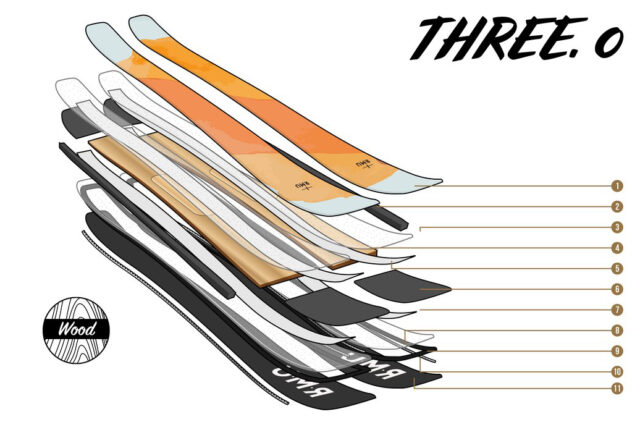


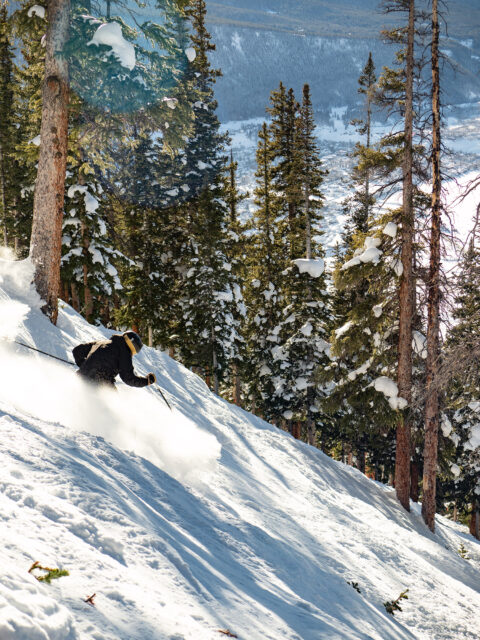
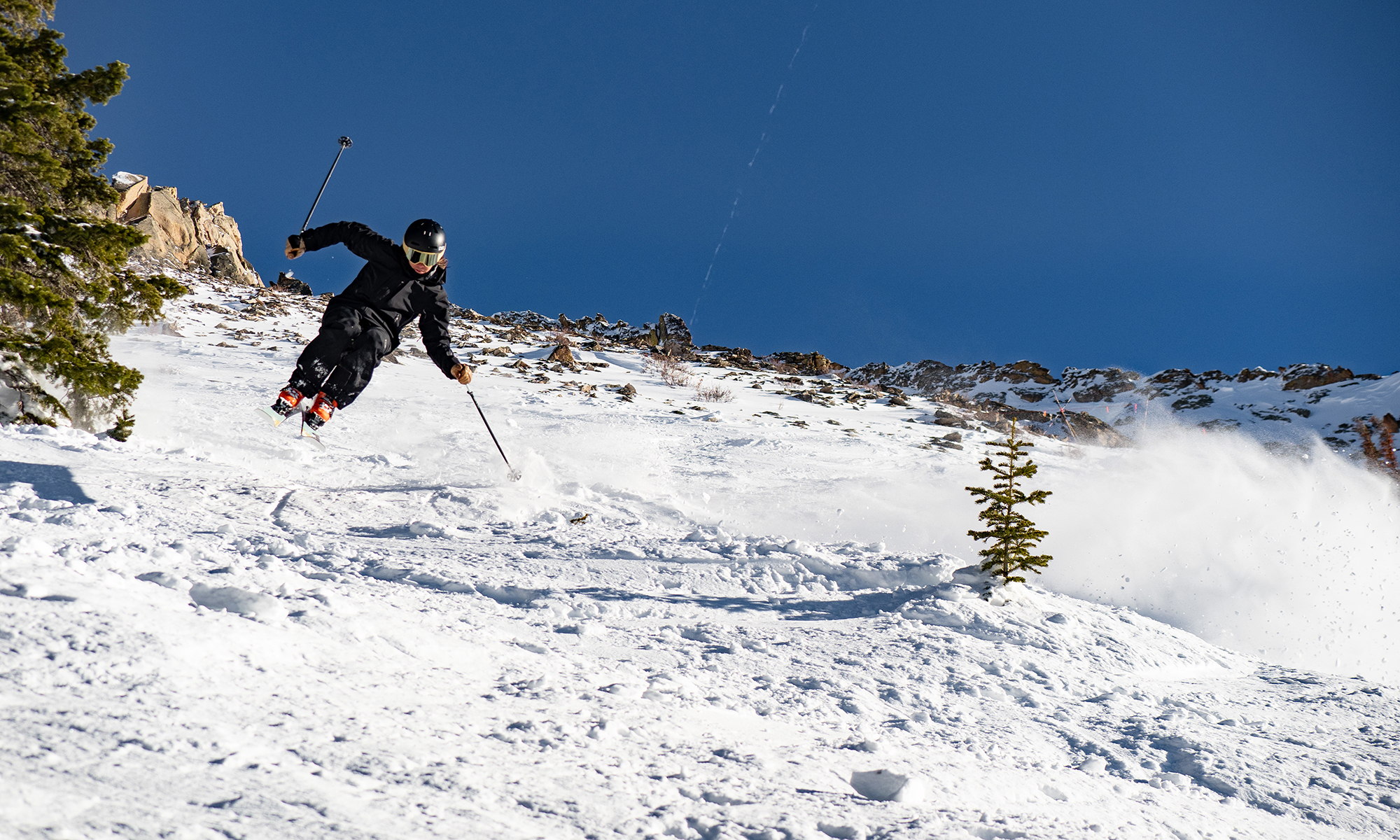
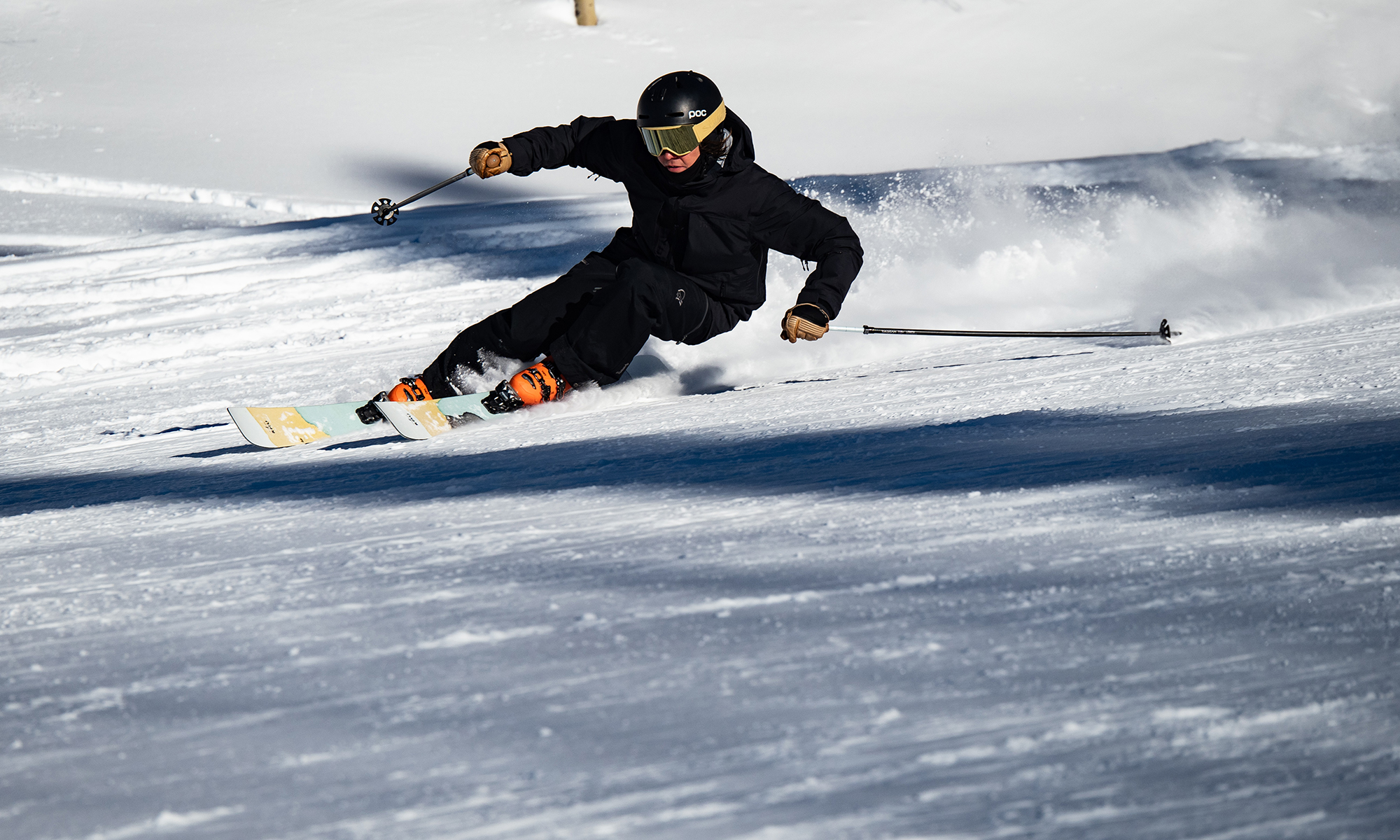
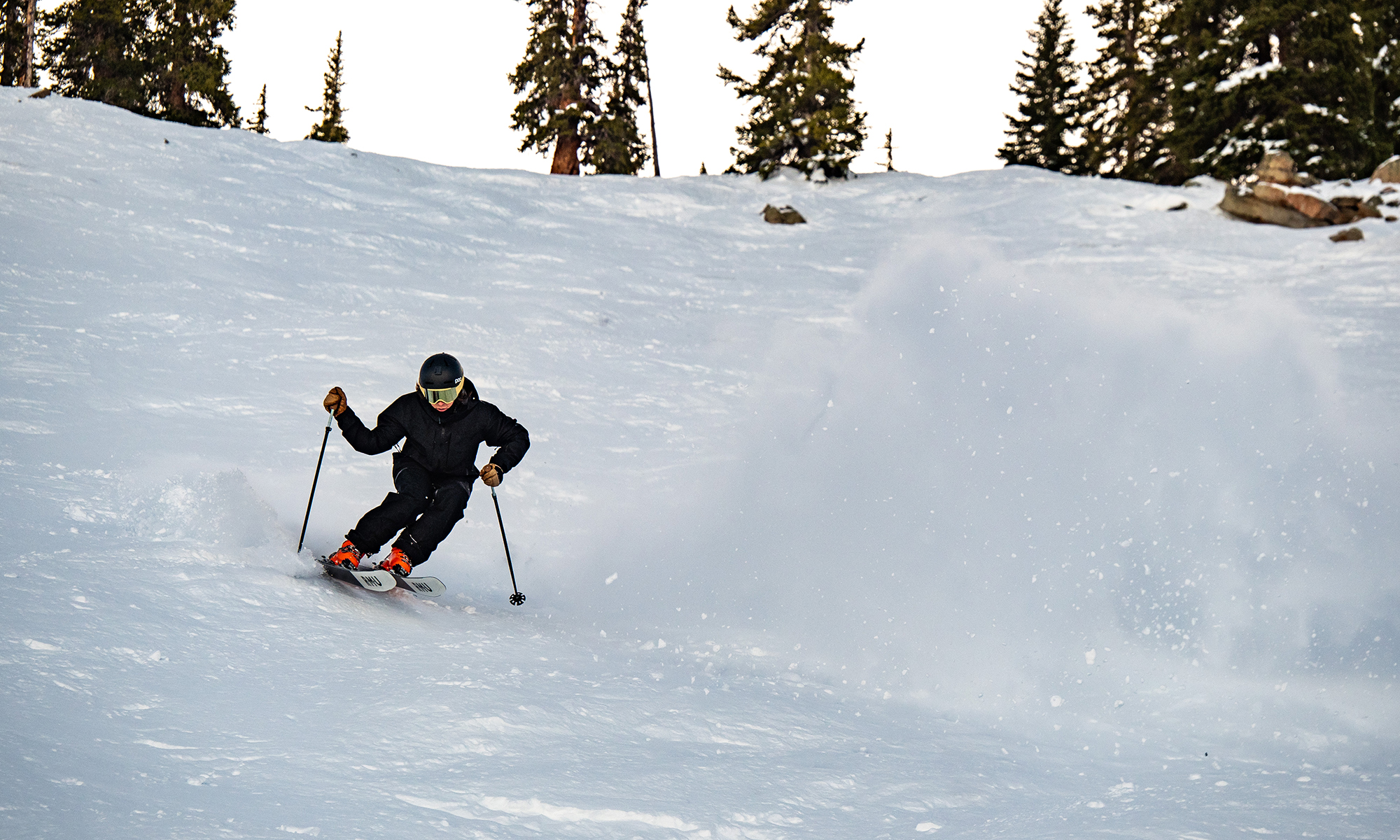
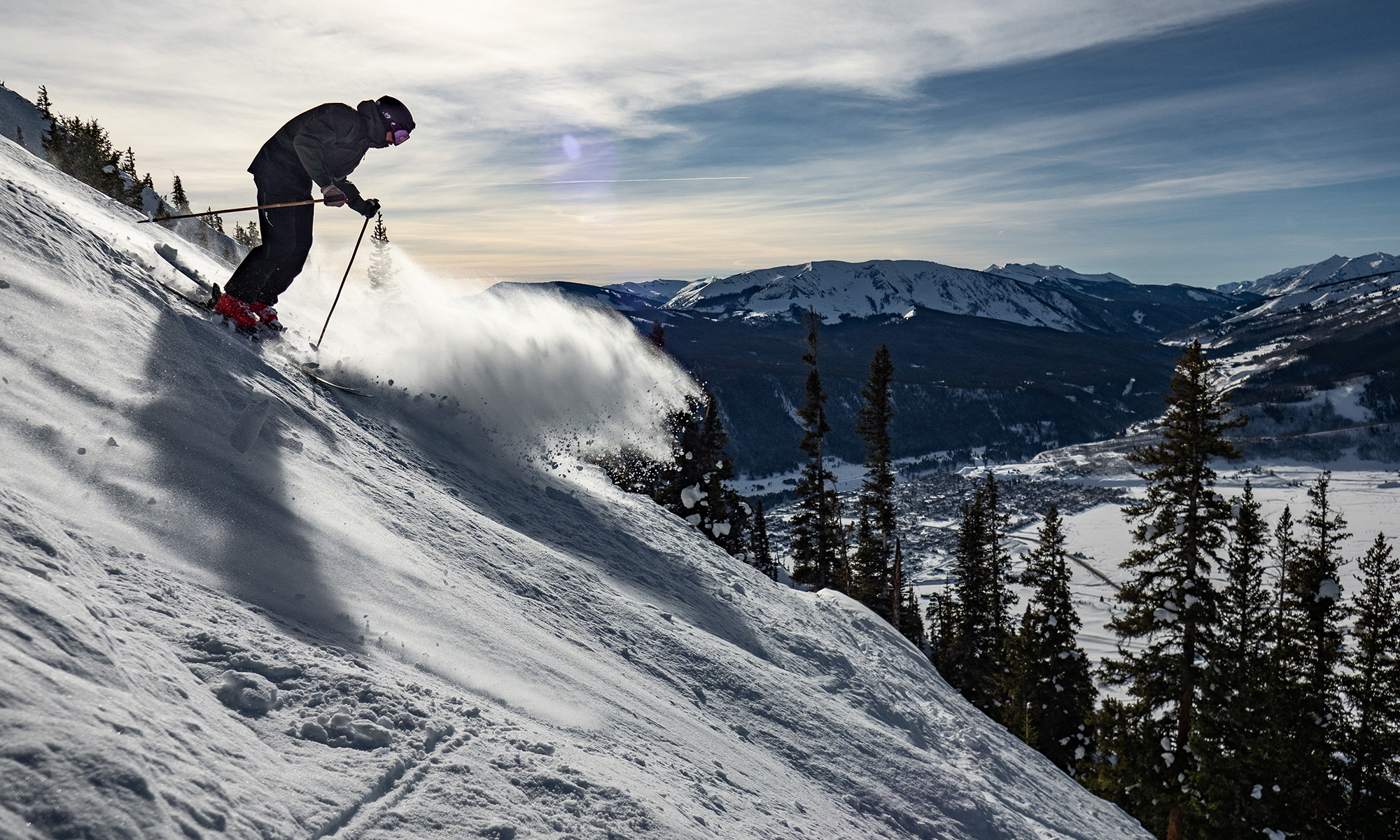
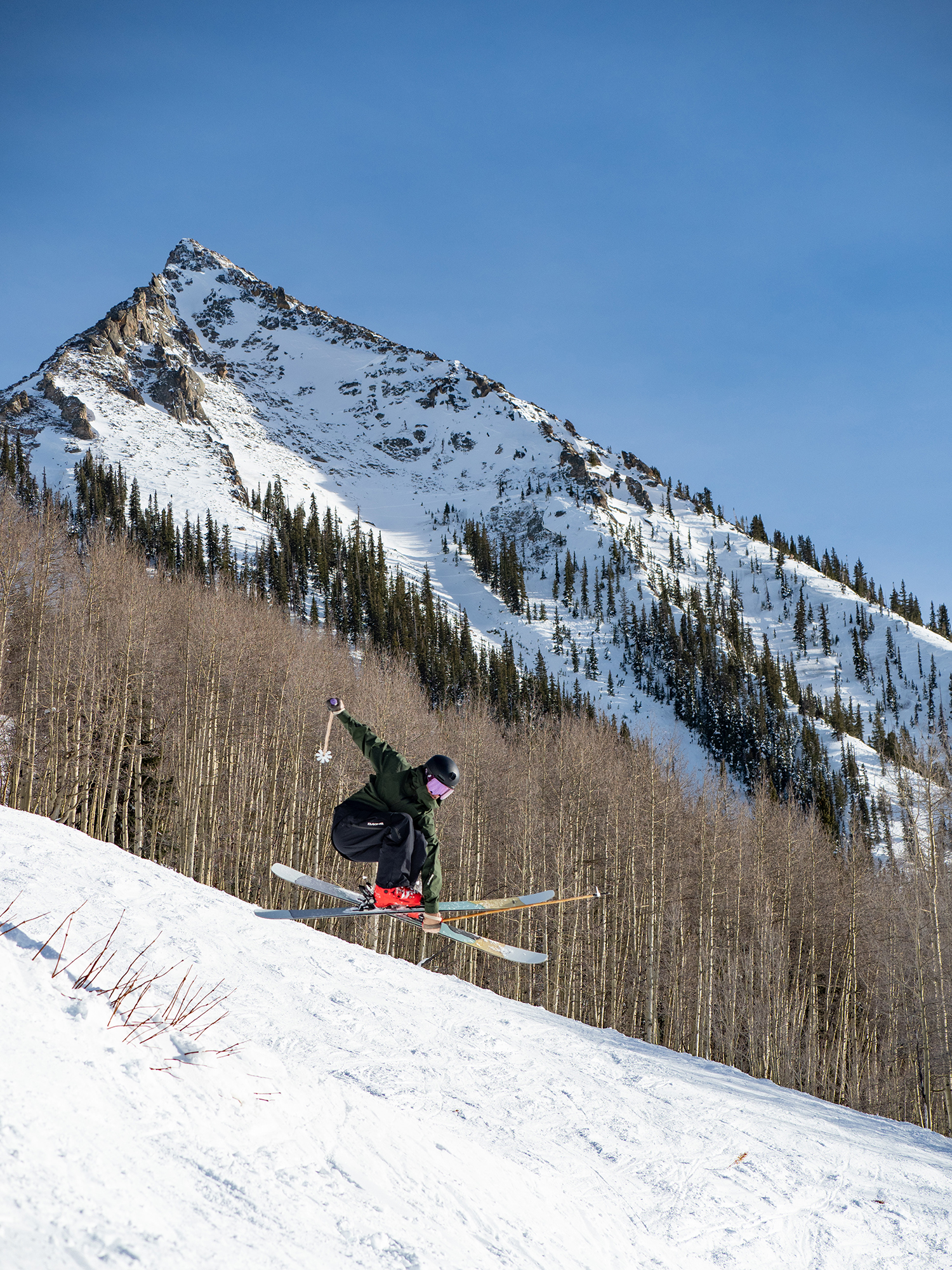
How would the “poppy” playful characteristics compare to the sego big horn? I currently run the big horn 181 and love how poppy, yet stable it is for a resort ski. The apostle is a very tempting next option as I do not ski switch frequently, but prefer a neutral or slight driving stance, and the rocker profile being quite similar to the black crows atris definitely seems to fit that bill.
What a cool ski! Reminds me of… The Candide 3.0 actually! If you have skied both, how would you say it compares? Most of the specs are so so SO similar…
Great review. I ski 180 Blizzard Rustler 10s (160 lb, 6′ 1″ tall) and love them for on resort as they fit my style of shorter turns, all mountain, fun skis – my daily driver though generally aim for softer snow days. Looking at these RMU Apostle 3.0 106 184’s but the “Tour” carbon version as my one set of backcountry skis for softer snow here in the PNW since they seem somewhat similar characteristically to the Rustler 10’s. The Apostle 3.0 106 Tour version looks much lighter so reasonable for backcountry and seems like they could fit the bill.
However, I have also been considering the DPS Pagoda 106 C2 Tour’s at 184 cm thinking while they might not be as playful, they get strong reviews as all mountain, lightweight (though in 184’s the pair is only about ~140g lighter than the Apostles) though I worry they might be a bit stiff and more hard charging coming in from something like the Rustler 10. The DPS Pagoda’s 106’s confuse me a bit since the DPS 106 has a shorter turning radius (19 metre vs the 20 metre of Apostle) so it seems like they should be pretty playful/energetic but I don’t get that takeaway from what I see online.
Not sure anyone has comments on the DPS Pagoda 106 C2s’ relative to the Apostle 3.0 106’s but any 2 cents on that would be much appreciated (other than neither are a cheap date!).
Thanks for the great review. Would love to hear about the metal version too, keen to understand how it’s differences play out
Any chance we’ll be seeing some reviews on the RMU Valhallas? Very interested in those skis. Are they similar/the same as the Apostle?
Just came across your post Mike and thought I’d give my 2 cents from what I’ve experienced since it seems you’re skiing on (or drawn to) similar sticks. I’ve been skiing the rustler 10’s since start of last season and am a big fan for chillin resort days where I’m just out to hang with whoever and do whatever. I tried a few other skis while on a trip and kept coming back to my rustlers. I do quite a bit of backcountry in the PNW too and love the DPS pagoda 100 tour skis. I think they are a great dedicated backcountry ski for PNW if you like skis like the Rustler, QST 106, RMU apostle 106, etc. I’ve also skied many many days on the older atris and older (circa 2006) mantra for context. The atris was great fun but less content moving as fast/dynamically as I wanted to move down the fall line, and the mantra just was not forgiving enough for super randomly constructed moguls, so for me the rustler 10 was a nice sweet spot between those two as a firmer conditions (firmer conditions on the west coast) all mountain daily driver, and then I plan to use the apostle 106 as my option for softer resort days but we’ll see how that pans out this season. For backcountry I’m really happy with the pagoda tour as my dedicated touring ski. The pagoda has been amazing for me in chest deep untouched pow but also wetter weird PNW stuff and I also just like the uphill with them. In deeper conditions the pagoda was really really easy to keep it from getting grabby. In a way it just went where I wanted it to go with very little input. As you can see I guess my style is what blister guys call a dynamic/nimble style or whatever, but these skis seem to work for me so far and so I figured I’d share my thoughts on the pagoda tour. Relative to these others. I can def recommend the pagoda tour for anyone that likes skis like the rustler 10.
Anybody here skied the Apostle 106 vs. the RMU Foundation 106 C2? I’m an intermediate (snowboarder turned skier) working my way up and I have the Cassiar 94 (Foundation) and love them but after this last winter in Tahoe, finger’s crossed, I’m feeling like I need something wider with some rocker for resort powder. Also was looking at the 4 FRNT MSP 107.